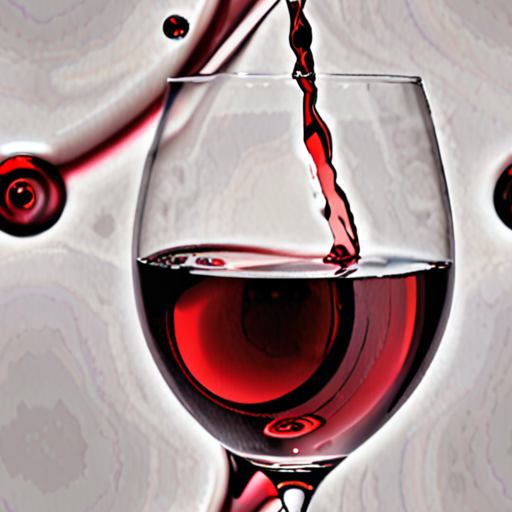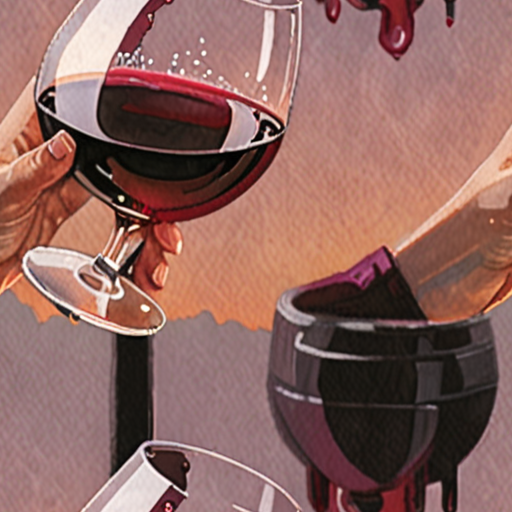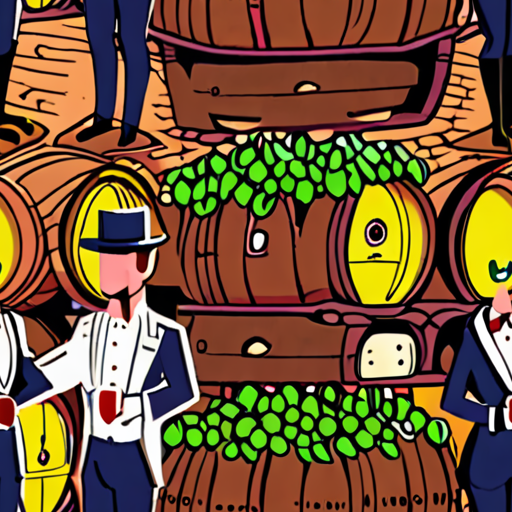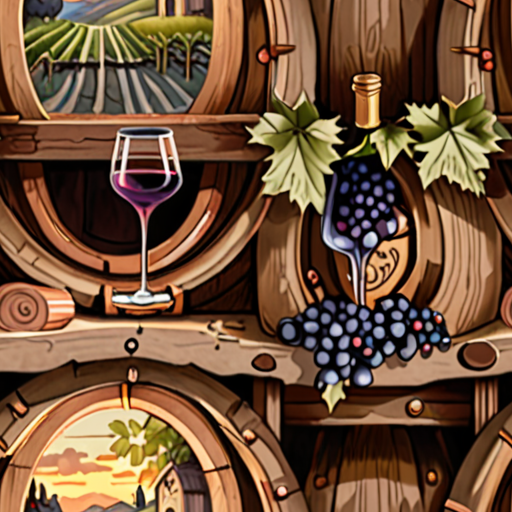When it comes to wine, there’s more to savor than just the taste – understanding wine tasting terminology can elevate your appreciation and confidence when describing wines like a pro. From the nuances of flavor profiles to the art of crafting poetic descriptions, mastering the language of wine tasting is a journey worth embarking upon. Whether you’re a seasoned connoisseur or a curious beginner, grasping the fundamentals of wine tasting terminology can unlock new dimensions of enjoyment and discovery.

The 5 Ss of Wine Tasting
As a wine enthusiast, understanding the 5 Ss of wine tasting can elevate your appreciation and enjoyment of fine wines.
- Sight: Observe the wine’s color, clarity, and viscosity. A well-made wine typically has a vibrant color and a clean appearance.
- Swirl: Rotate the wine glass to release the aromas and flavors. This helps to aerate the wine and prepare it for tasting.
- Smell: Take a moment to appreciate the wine’s aroma. Pay attention to the intensity and character of the scents, which can indicate the wine’s flavor profile.
- Taste: Finally, take a sip of the wine and experience its flavors, acidity, tannins, and finish. Consider how the wine lingers on your palate.
- Swallow: After tasting, swallow the wine and note how it feels in your mouth and throat. This can give you insight into the wine’s texture and body.
By following these steps, you’ll be able to fully appreciate the complexities and nuances of fine wines and develop your own unique palate.
Key Takeaways:
- Pay attention to the wine’s color, clarity, and viscosity.
- Aerate the wine by swirling the glass before tasting.
- Appreciate the wine’s aroma and consider its intensity and character.
- Experience the wine’s flavors, acidity, tannins, and finish.
- Note how the wine feels in your mouth and throat after swallowing.
Practice Makes Perfect:
Remember, the 5 Ss of wine tasting are a skill that takes practice to master. Don’t be discouraged if you don’t get it right away – keep experimenting and learning, and you’ll soon become a confident wine connoisseur.
The Art of Wine Appreciation
As a wine enthusiast, I’m often asked what the term is for tasting wine.
- Oenology
- Vinification
- Sommelier
- Wine Tasting
While these terms are all related to wine, the most common term used to describe the act of tasting wine is simply “wine tasting.”
Understanding Wine Tasting
Wine tasting involves evaluating the color, aroma, flavor, and overall character of a wine.
- Color: Observe the wine’s color, which can range from pale yellow to deep red.
- Aroma: Swirl the wine and take note of its scent, which can evoke fruit, floral, or earthy notes.
- Flavor: Take a sip and experience the wine’s taste, which can be sweet, dry, or somewhere in between.
- Finish: Notice how the flavors linger after swallowing.
Key Terms in Wine Tasting
Familiarize yourself with these essential terms to enhance your wine-tasting experience:
- Tannins: Compounds that give wine its astringent sensation.
- Acidity: A measure of a wine’s sharpness or brightness.
- Bodies: Refers to the weight and texture of a wine in the mouth.
- Finish: The lingering flavors and sensations after swallowing.
Best Practices for Wine Tasting
To get the most out of your wine-tasting experience:
- Use a clean glass: Prevent contamination and preserve the wine’s aromas.
- Swirl the wine: Release the aromas and oxygenate the wine.
- Take small sips: Allow the flavors to unfold and appreciate the nuances.
- Record your thoughts: Note your impressions and preferences.
Join Our Community of Wine Enthusiasts
At Fine Vines, we’re dedicated to sharing our passion for wine with fellow enthusiasts. Explore our website for expert wine guides, vineyard insights, and pairing tips to deepen your understanding and appreciation of fine wines.

The 4 Ss of Wine Tasting
As a wine enthusiast, understanding the basics of wine tasting can elevate your appreciation and enjoyment of fine wines.
- Sight: Observe the color, clarity, and viscosity of the wine. A well-made wine typically has a vibrant color, clarity, and a smooth texture.
- Swirl: Rotate the wine glass to release the aromas and flavors. This helps to aerate the wine and prepare it for tasting.
- Smell: Take a moment to appreciate the aroma of the wine. Different grape varieties and winemaking techniques can impart unique scents and fragrances.
- Taste: Finally, take a sip and experience the flavors, acidity, tannins, and finish of the wine. Pay attention to how the wine lingers on your palate.
By following these simple steps, you’ll be able to develop your senses and become a more discerning wine connoisseur.
Key Considerations
When evaluating a wine, consider its overall balance, complexity, and aging potential. A well-crafted wine should have a harmonious blend of acidity, tannins, and sweetness.
Practical Tips
To enhance your wine-tasting experience, try the following:
- Use a clean and dry glassware to prevent contamination and preserve the wine’s aroma.
- Store your wine in a cool, dark place to slow down oxidation and preserve flavor.
- Experiment with different food pairings to discover new combinations and preferences.

Tasting Wine Like a Pro
When it comes to wine tasting, there are several key things to consider, including the color, clarity, aroma, body, acidity, tannins, and finish. Here are some steps to follow:
- Observe the Color: Hold the wine up against a white background and observe its color. Red wines can range from pale garnet to deep purple, while white wines can range from pale yellow to golden.
- Check the Clarity: Look for any sediment or particles in the wine. A clear wine indicates good winemaking techniques.
- Smell the Aroma: Swirl the wine in your glass and take a sniff. Different aromas can indicate the type of grape used, the region it was produced in, and the level of aging.
- Taste the Body: Take a small sip and notice the weight and texture of the wine in your mouth. Light-bodied wines are easy to drink, while full-bodied wines are rich and complex.
- Evaluate the Acidity: Notice how the wine feels in your mouth. High-acidity wines can feel sharp and refreshing, while low-acidity wines can feel flat and dull.
- Assess the Tannins: Tannins give wine its astringent sensation. High-tannin wines can feel dry and puckering, while low-tannin wines can feel smooth and silky.
- Consider the Finish: Pay attention to how long the flavors last after you swallow the wine. A long finish indicates high-quality wine.
To get the most out of your wine tasting experience, try the following:
- Use a Wine Glass: A wine glass helps to concentrate the aromas and flavors of the wine.
- Swirl the Wine: Swirling the wine releases the aromas and helps to aerate the wine.
- Take Small Sips: Taking small sips allows you to appreciate the nuances of the wine without overwhelming your palate.
- Pay Attention to the Details: Pay attention to the color, clarity, aroma, body, acidity, tannins, and finish of the wine.
By following these steps and paying attention to the details, you’ll be well on your way to becoming a wine connoisseur. Remember to always taste responsibly and enjoy the process of discovering new wines and flavors.
What Are Funny Wine Tasting Terms?
We’ve all heard them – the outrageous, humorous, and sometimes baffling wine tasting terms that leave us wondering what our sommeliers are talking about.
- Sweaty Socks
- Cat Pee
- Barnyard
- Petrol
- Cut Grass
- Pencil Shavings
- Saddle Leather
- Fruitcake
- Garbage Dump
- Band-Aid
These descriptors might sound absurd, but they’re actually legitimate ways to describe the complex aromas and flavors found in certain wines.
For instance, a wine with notes of sweaty socks might evoke memories of a hot summer day spent hiking through the countryside, while a wine with hints of cat pee could remind you of a spring morning spent lounging in the sun.
The key to understanding these terms lies in recognizing that they’re often used to convey the unique characteristics of a particular grape variety or region.
Take, for example, the infamous “barnyard” descriptor, which is commonly associated with red wines from the Loire Valley in France.
This term refers to the earthy, animal-like aromas that can be detected in these wines, which are often produced using traditional winemaking techniques.
Similarly, the “petrol” note found in some white wines is a result of the high concentration of sulfur compounds present in the grapes.
While these terms may seem strange at first, they’re actually a vital part of the wine enthusiast’s vocabulary, allowing us to better appreciate the nuances and complexities of the world’s greatest wines.
At Fine Vines, we believe that wine should be approachable and enjoyable for everyone, regardless of their level of expertise.
That’s why we’re dedicated to providing you with the tools and knowledge needed to navigate the world of wine with confidence.
Whether you’re a seasoned oenophile or just starting out, we invite you to join our community of wine lovers and discover the joy of exploring the world’s most fascinating wines.
Learn More About Our Wine Education Resources
When it comes to wine tasting, there’s no substitute for experience and practice.
That’s why we recommend trying a variety of wines from different regions and producers to develop your palate and learn to identify these unique descriptors.
Some great options for beginners include:
- Riesling from the Mosel region of Germany
- Pinot Noir from Burgundy, France
- Chardonnay from Napa Valley, California
Remember, the world of wine is full of surprises and delights waiting to be discovered.
So why not start your journey today and see where the road takes you?
Get Started With Our Wine Pairing Tips
As you continue to explore the world of wine, keep in mind that the most important thing is to have fun and enjoy the process of discovery.
Don’t be afraid to try new things and ask questions – after all, that’s what makes wine so exciting!
Happy sipping!

Things Wine Snobs Say
We’ve all encountered those pretentious individuals who claim to have refined taste buds, but often come across as insufferable.
- The nose on this wine is incredibly complex, with notes of oak and vanilla.
- This vintage is truly exceptional, with a finish that lingers for hours.
- I can detect hints of citrus and floral notes in this particular blend.
- This wine is far too pedestrian for my refined palate.
- I’m surprised you can’t appreciate the subtle nuances of this varietal.
- This bottle is a true masterpiece, crafted by a renowned winemaker.
- The tannins in this wine are simply sublime, coating the palate with elegance.
- I much prefer a full-bodied red, something with real heft and complexity.
- This wine is a perfect example of the region’s terroir, showcasing its unique characteristics.
- I’m afraid this wine is a bit too oaky for my taste, but I suppose it’s a matter of personal preference.
Common Wine Snob Phrases
Wine snobs often rely on a set of catchphrases to sound knowledgeable and sophisticated.
- “This wine has great acidity.”
- “I can smell the terroir in this glass.”
- “The finish is long and satisfying.”
- “This wine needs time to breathe.”
- “I prefer a wine with low tannins.”
- “This vintage is a true gem.”
- “The nose on this wine is incredible.”
- “I can detect hints of spice and pepper.”
- “This wine is a perfect pairing for cheese.”
- “I much prefer a dry wine.”
Conclusion
While wine snobs may try to impress us with their supposed expertise, it’s essential to remember that wine appreciation is subjective and personal.
Don’t be intimidated by their pretentious language – focus on finding wines that you genuinely enjoy, and don’t be afraid to ask questions or seek recommendations from knowledgeable sommeliers.
0 Comments